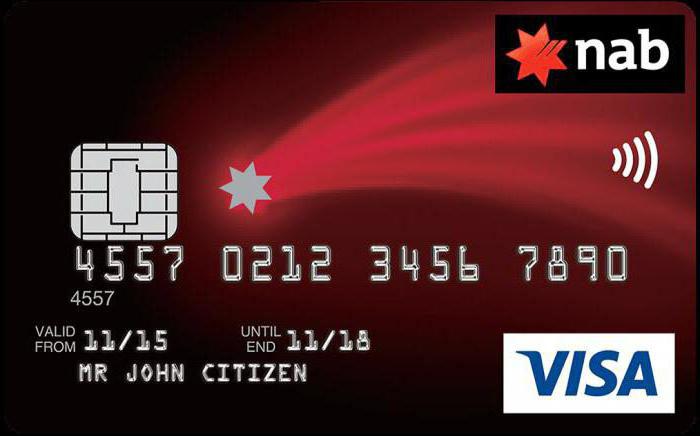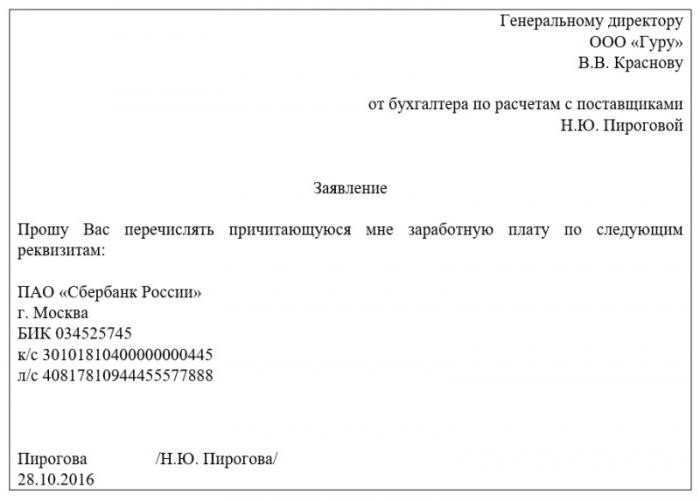Transferring wages to the employee’s card is a common way of payment among enterprises and entrepreneurs. In this regard, a number of questions arise regarding the procedure for transferring to the card system and its organization.
Legislative regulation
Basic laws are TK and GK. The first affects the rights of the employee in terms of choosing the method of earning money. The second regulates the settlement system, in particular, it touches on the topic of payment orders.

You can still refer to the law on the national payment system. The main source of regulatory documentation is the provisions of the Central Bank and the Ministry of Finance, which regulate the system of organizing payments at the by-law level.
In particular, the Central Bank adopted the rules for the implementation of money transfers No. 383-P in 2012. The document fully discloses the topic of how to pay salaries to a bank card.
Banks, whose infrastructure provides a money transfer system, are entitled to establish their own rules within the framework of the regulation.
How is salary paid?
Legislation offers two ways:
- give money at the place of work;
- transfer them to the card in the bank.
In Russia, the serious introduction of the card system began about 10-12 years ago. Then budgetary organizations began to gradually switch to payments by transferring money to cards.

Transferring wages to the employee’s card is a choice not only of the employer, but also of the employee. That is, the law prohibits solving this issue unilaterally.
Thanks to this, some employees continue to receive cash. The law gives them such a right, and no one has the right to restrict them in it. Of course, it is more profitable for the employer to transfer to the card system, in connection with which various measures are taken to force the employee to agree to receive money through the card.
In addition, in large organizations, upon employment, they immediately report that the money will be transferred to the card. And a person, in fact, has no choice. Raising this issue during employment is not the best option to start a relationship with the new bosses.
Are there any advantages?
Some citizens now continue to believe that transferring wages to the employee’s card is a risky business. However, difficulties with money arise, first of all, due to economic reasons and actions of the enterprise management. Banks are not the cause of problems with receiving money, especially when it comes to state financial institutions. Moreover, the card gives access to money during the day without restrictions using the Internet or an ATM. The electronic payment system allows you to make part of the costs without visiting the cash desk or mail.

The card lists not only salary, but also compensation and guarantee payments. If an employee is in a state of temporary disability, payments are made in the same way.
From time to time the question arises: "Is the employer entitled to transfer to the card money issued for reporting allocated for the economic needs of the enterprise?". The law does not establish any prohibition in this regard. As before, the employee must prepare an expense report, providing receipts and other documents confirming the fact of expenses.
Where are the cards drawn up?
Legal entities, by law, are required to conduct almost all of their operations in non-cash form.This affects IP to the extent that they collaborate with organizations. Yes, and having a bank account gives some solidity.
The transfer of wages to employees' cards is organized in the same bank in which settlement accounts are also open.

The client company receives some preferences using the additional services of the bank. Thus, the employer does not lose anything, simplifying the life of his employees and himself.
Not so long ago, the law allowed workers to independently choose a credit institution in which they want to open an account to receive earned funds. But here the procedure is somewhat different.
What documents are submitted to the bank?
An order is issued to transfer wages to employee cards. In addition, the form of payment is indicated either directly in the employment contract or in a collective agreement. If earlier in the contract there was no special reservation to this effect, it is introduced by signing an additional agreement.
Here are some additional documents you need:
- list of employees;
- applications of employees to open a card account;
- copies of their passports
If the organization has not previously been serviced by the bank, a cooperation agreement is concluded with it and an application is submitted to draw up a salary project on behalf of the organization.

Papers are submitted either by representatives of the organization, or each employee visits the bank and provides documents. To receive a salary on a card, a sample application can be taken at a bank branch or downloaded from the site.
A company that previously had no relationship with the bank provides an additional package of documents:
- constituent documents (charter, memorandum of association);
- order to appoint a director, accountant.
The internal position of the bank may require other documents.
The person providing them must have powers delegated by proxy, or engage in this in accordance with official duties. Banks usually work with either an accountant or a human resources officer.
A bit about employee statements
In which case is a sample application not needed to transfer wages to a card? After all, nevertheless, the preparation of a whole package of additional documents is an unnecessary burden on employees, especially if dozens of people work at the enterprise.
A set of applications is not needed if the contract with the employee stipulates receipt of money through the bank. Although the bank may not agree to the issuance of cards, without confirmation of the consent of employees.
Transfer to third parties
The law does not prohibit the transfer to third parties. But deductions are made according to the statement. The absence of the latter may cause difficulties in the event of a check or complaint by the employee.
How are payments arranged?
The procedure for transferring salaries to a card does not cancel the one established by law. Money continues to be issued 2 times a month: advance payment and salary. The maximum period between payments cannot be more than 15 days.
A package of documents is regularly transmitted to the bank:
- register for the transfer of funds;
- money orders.
Information is transmitted in electronic or written form. Specific rules and requirements for documents are established by banks at their own discretion.

In practice, it is important that payment orders and the registry match the total amount of cash.
In addition, a delay in payment of salaries due to the transition to the card system or opening accounts in another bank is not considered permissible from the point of view of the law. Employers must, without exception, adhere to the principle of "pay salaries on bank cards on time." A violation of the payment deadlines obliges the supervisory authorities to hold administrative offenders accountable.
Accounting Nuances
What are accounting entries when transferring wages to an employee card? The mark is made in debit account 70, according to PBU. Marks are made in the following order:
- total amount of transfer;
- amount of accrued salary;
- the amount of deductions for the payment of personal income tax;
- amounts of contributions to social insurance funds, a pension fund;
- deductions to the union;
- indemnification.
Opposite each paragraph, a document is marked that serves as the basis for deductions:
- payment statement;
- payment order;
- reference calculation, an agreement with a banking organization;
- acts of official inspections at the enterprise;
- damages order.
The court’s decisions on the recovery of alimony, damage, etc. are also used as a basis. Payments and instructions are the basis for receiving funds. The reference calculation is made for the tax service and social insurance funds.
The above items are not present in all situations. Payments to the union take place if the employee is a member of it. Similarly with damages and other payments according to the decision of the courts.
As a rule, the whole package of documents is payment orders and reference calculations, justifying deductions to the state treasury. They, with proper registration of relations with the bank, are enough to ensure the transfer of wages to a personal card.
What actions are taken by the bank?
The Bank accepts the client’s order for the transfer of funds, drawn up in the form of an order, warrant or other document prescribed by law.
Forms of documents are presented in regulation No. 383-P. Their peculiarity in electronic form is the limitation of the number of characters that are used in the compilation.

The client sends the order to the bank, then the money is transferred to the specified account or accounts. But sometimes it is not enough, and an additional order is issued already at the bank branch. Its necessity is already provided for by the internal rules of the institution. An order for the payment of funds may be attached to the register.
It is more and more difficult if the recipients are simultaneously served at several banks. If an employee uses the services of a bank to which the company is not related, other questions arise. And here it is difficult to find a pattern of transferring wages to the employee’s card.
The register also notes information about the recipients, the amounts due to each of them, dates and numbers of orders.